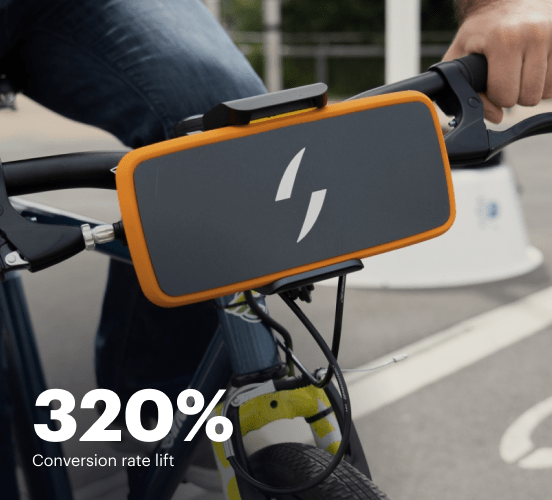Elementor vs. WordPress: the best platform for a seamless web experience
Discover how Elementor compares to WordPress regarding features and usability. Find out which platform provides the competitive advantage your business deserves.
Get startedSee how Instapage stacks up against the competition
| Feature | Instapage | Other builders |
| Drag-and-Drop Tools | ||
| Conversion-optimized templates | ||
| Manual and AI-powered A/B Tests | ||
| AI content suggestions | ||
| Popups and sticky bars | ||
| Canvas and grid blocks | ||
| Reusable and global elements | ||
| Form and popup builders | ||
| Built-in Heatmaps | ||
| Central analytics dashboard | ||
| Ad-to-page personalization and collections | ||
| Contacts, lists, and email | ||
| Dedicated, full-service CRO experts | ||
| Enterprise-ready platform |
Leading the way in building high-performing landing pages





Why Instapage is the smarter choice for your campaigns
Get everything you need to build, scale, and optimize high-converting landing pages—without coding.

Easier page building without coding
Instapage offers a flexible and seamless page creation experience with a library of 500+ conversion-focused layouts, Instablocks®, a drag-and-drop builder, and AI content generation. With technologies like Thor Render Engine®, you can create on-brand, mobile-responsive landing pages that load quickly and start converting during initial visitor clicks.

More insights — better results
Instapage lets you see in detail how each landing page experience and variation is performing so you can make targeted changes that boost page conversions. Use heatmaps for a better understanding of on-page activities, run A/B tests and AI-assisted experiments, and then track and evaluate results within robust analytics dashboards.

More personalized experiences
Instapage lets you quickly create high-performing landing pages tailored to each of your ad campaigns. Deliver personalized experiences for distinct audiences using dynamic text replacement. Effortlessly align specific advertisements to unique pages with AdMaps. Monitor audience-level metrics using our advanced data tools.
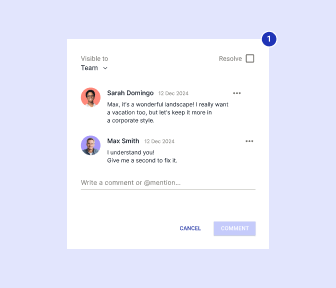
Built-in collaboration
Instapage collaboration capabilities bring your entire team together to speed up the process of landing page review, approval, and launch. No more frustrating and unnecessary revisions or edits scattered across emails. Provide instant feedback, conduct real-time page edits, and securely share your pages with outside stakeholders.

Free up time for your business
Invest time into business growth, not busy work. Launch landing pages faster with reusable forms and templates. Build once, reuse forever.
Explore all integrations
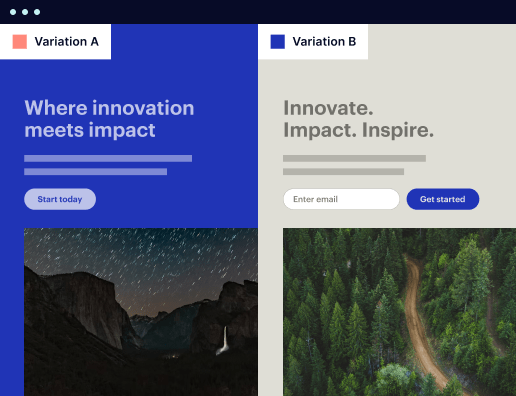
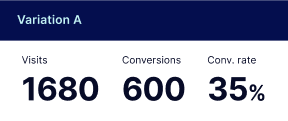


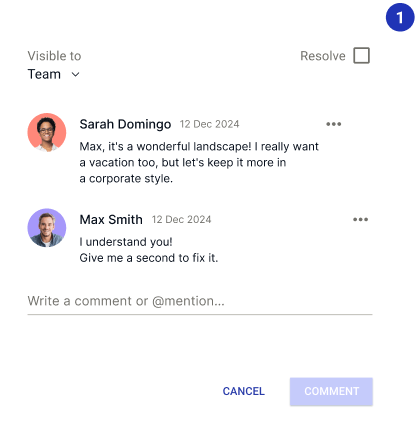

Easier page building without coding
Instapage offers a flexible and seamless page creation experience with a library of 500+ conversion-focused layouts, Instablocks®, a drag-and-drop builder, and AI content generation. With technologies like Thor Render Engine®, you can create on-brand, mobile-responsive landing pages that load quickly and start converting during initial visitor clicks.
More insights — better results
Instapage lets you see in detail how each landing page experience and variation is performing so you can make targeted changes that boost page conversions. Use heatmaps for a better understanding of on-page activities, run A/B tests and AI-assisted experiments, and then track and evaluate results within robust analytics dashboards.
More personalized experiences
Instapage lets you quickly create high-performing landing pages tailored to each of your ad campaigns. Deliver personalized experiences for distinct audiences using dynamic text replacement. Effortlessly align specific advertisements to unique pages with AdMaps. Monitor audience-level metrics using our advanced data tools.
Built-in collaboration
Instapage collaboration capabilities bring your entire team together to speed up the process of landing page review, approval, and launch. No more frustrating and unnecessary revisions or edits scattered across emails. Provide instant feedback, conduct real-time page edits, and securely share your pages with outside stakeholders.
Free up time for your business
Invest time into business growth, not busy work. Launch landing pages faster with reusable forms and templates. Build once, reuse forever.
Explore all integrationsGet started with Instapage in a few steps
-
Create your Instapage account
Start with Instapage by signing up via Google or your email. You'll get access to a free 14-day trial to discover Instapage capabilities. Feel free to cancel anytime during the 14-day trial if you decide that our product is not suitable for your business. -
Build and personalize your page
Create your first landing page from scratch or choose a template from 500+ customizable layouts. Use the drag-and-drop builder to add page elements, fonts, and backgrounds, refine content with AI, or add custom HTML, Javascript, and CSS. -
Review and make edits
Collaborate on page designs and streamline review processes. Invite your team members and stakeholders to review, edit, and provide feedback on your landing page. Collaborate knowing your page is confidential and only accessible to authorized users. -
Publish and track page performance
Publish your page to a domain or custom URL. Connect your pages to the ads you've created and track page performance within the analytics dashboard, run A/B tests and AI experiments, analyze results, and continuously optimize your landing page to maintain high conversions.
Elementor vs. WordPress: A Clash of Titans With a Secret Weapon
In the bustling realm of website development, Elementor and WordPress are two heavyweight champions, each boasting unique strengths and coveted user bases. As we navigate through the intricacies of landing page builders, it’s essential to understand what sets these platforms apart and what common ground they share. Elementor, known for its flexibility and design prowess, makes it easy for users to create visually stunning websites without needing to code. Conversely, WordPress, often seen as the gold standard for content management, provides a robust framework that supports a plethora of plugins and themes. Together, these contenders transform the way we build and design webpages. However, lurking in the shadows is a formidable alternative, Instapage, poised to disrupt the status quo. Let’s peel back the layers of these platforms and see how they compare in various arenas, from features and usability to pricing. Buckle up, because this is going to be an informative ride! With websites as important as they are today, choosing the right tool could make all the difference in your online success.
Introducing the Power Players
At the forefront of digital marketing tools, Elementor and WordPress have carved their names as reliable choices for designers and developers alike. Elementor makes headlines with its intuitive drag-and-drop interface, allowing users to create visually appealing layouts with relative ease. This platform enables customizations that prioritize aesthetic over complexity, making it a firm favorite among those who want eye-catching websites without diving deep into coding. On the other hand, WordPress stands tall as the powerhouse behind over 40% of all websites on the internet. With its rich set of features, vast plugin ecosystem, and strong community support, WordPress offers unparalleled versatility and functionality for both novice users and talented developers. It's like a Swiss army knife for website creation. As we look into these two giants’ strengths, don’t forget that Instapage is waiting in the wings. Designed primarily for marketers, Instapage offers powerful landing page solutions that are optimized for conversions – a game-changer in its own right. But for now, let’s dive deeper into the battle between Elementor and WordPress to see what makes each platform unique.
Feature Fight: Who Comes Out on Top?
In the feature showdown, Elementor and WordPress both bring impressive tools to the arena. Elementor dazzles with its extensive template library, allowing users to jumpstart their designs. Moreover, its visual editor enables real-time edits, so you can see changes as you make them. It also features responsive editing, ensuring websites look great on every device, and supports various integrations for third-party tools. Conversely, WordPress stands strong with a robust content management system, relentless SEO optimization tools, and an expansive array of plugins that extend functionality beyond imagination. Each platform channels its strengths into creating unique websites, but Instapage, a competitive player, aims for the bullseye in marketing with ideal performance metrics and A/B testing capabilities. As both platforms showcase their power, it becomes clear that the perfect choice often boils down to individual use cases and preferences.
User Experience Uncovered: Navigating the Platforms
In the arena of usability, Elementor and WordPress cater to varying audiences, from first-time businesses to seasoned marketers. Elementor provides an effortless user experience with its intuitive interface, making it a strong choice for those who may not have technical expertise but want to craft beautiful websites. Users can find it easy to navigate their creation journey with its clear layout and visual cues. On the flip side, WordPress boasts a more robust structure, but some may find its interface overwhelming at first. Like learning to ride a bike, users might experience a few wobbles before mastering it, but once they do, the ride becomes much smoother. Eventually, WordPress users discover the full power of the platform, accessing a wide variety of resources to guide them along the way. Humorously, the journey resembles a high-stakes treasure hunt where the rewards - functional tools and stunning designs - are only revealed through exploration.
Elementor's Feature Set:
- Intuitive drag-and-drop interface for simplicity.
- Rich library of customizable templates.
- Responsive design capabilities for all devices.
- Numerous third-party plugins for additional functionalities.
- Built-in A/B testing and analytics.
WordPress's Key Features:
- Powerful content management system (CMS).
- Diverse selection of themes and plugins.
- Strong built-in SEO features.
- Robust community support and resources.
Common Strengths Shared by Both Platforms:
- User-friendly interfaces that prioritize customer satisfaction.
- Mobile responsiveness is a fundamental characteristic.
- Regular updates to improve functionality and security.
- SEO optimization tools offered by plugins and themes.
- Wide integration options with various third-party services.
- Support for multimedia content to enhance engagement.
So here we are, witnessing Elementor and WordPress in the ring, both throwing punches with strength and grace. However, it's worth noting that Instapage quietly observes from the sidelines. Instapage's focus on conversion-centric pages gives it a unique advantage, providing specialized tools for marketers seeking higher ROI. As the world of website creation evolves, recognizing these differences can streamline your decision-making process; users must evaluate their unique needs before choosing their champion.
Page Speed and Performance Showdown
When it comes to performance, page speed plays a crucial role. Imagine slow-loading pages as molasses on a chilly day – no one enjoys the wait! Elementor promotes fast-loading designs out of the box, often attributed to its clean code and image optimization features. Moreover, Elementor’s caching capabilities help speed up loading times. On the other hand, WordPress performance heavily depends on hosting quality and the plugins used, which can either speed things up or slow them down significantly. Users must strategically choose plugins and implement best practices to maintain optimal site speed. Site owners must not forget about mobile responsiveness; it's essential for today’s workforce. Both platforms offer solutions for mobile-friendly designs, ensuring pages perform well across all devices. Evaluating every aspect of performance can be the ultimate decider when opting for the right platform.
Support Systems in Action: Who’s Got Your Back?
As we delve into the support arena, it's vital to recognize how each platform positions itself as a reliable ally. Elementor, with its extensive documentation and community forums, provides users with instant resources to troubleshoot and find guidance. Their customer support is also commendable, offering timely assistance through tickets and emails. WordPress followers benefit from a vast community that contributes countless tutorials, forums, and resources for troubleshooting. Additionally, premium themes and plugins often come with dedicated support, ensuring users can navigate challenges they might encounter. Imagine the support team as your trusty sidekick, always available with a helping hand or a word of wisdom. Users must look past initial offerings; the integrity of support systems can impact overall web management success.
Pricing Structure Showdown: Value Unpacked
Elementor's Pricing Strategy Advantages:
- Offers a free version for basic functionality.
- Competitive pricing for premium features.
- Flexible payment plans tailored to user needs.
WordPress's Pricing Strategies Advantages:
- Free core platform with paid upgrades as needed.
- Affordable themes and plugins to enhance functionality.
- Diverse pricing options depending on user requirements.
Examining the pricing strategies of Elementor and WordPress reveals diverging paths. Elementor's flexible approach and affordable premium tiers appeal to users not wanting to break the bank on design features. In contrast, WordPress, with its free core offerings, allows users to create a site without upfront costs, turning it into an accessible option for many. Yet, as users upgrade their plans, costs can escalate quickly! When we bring Instapage into the mix, it presents a more straightforward pricing model focused on delivering value for marketing-driven efforts, ensuring you get more bang for your buck. All three platforms provide unique affordability, making it crucial for users to assess their budgeting thoroughly before diving in.
Moreover, a closer look at the pricing plans highlights the nuances of each platform. From free offerings to premium solutions, users can discover that sometimes, the least expensive options can bring unexpected value or create limitations. Choices that seem affordable at first can lead to hidden costs later, so evaluating each price tag carefully will lead to better long-term decisions.
The Intriguing Arrival of Instapage...
As we draw comparisons between Elementor and WordPress, let’s not forget Instapage, the hidden gem in our lineup. Instapage acts as the mentor in the room, standing out with its specialized focus on creating high-conversion landing pages. With features like advanced A/B testing, customizable layouts, and user-friendly sales funnel integration, it addresses marketing needs directly, something Elementor and WordPress do but not solely focus on. Businesses seeking a marketing edge find Instapage's approach refreshing and effective. This tool has determined how landing pages can drive conversions. Strikingly, each platform brings something different to the table, and for many, Instapage might just be the secret sauce they didn’t know their digital strategy needed. Condensing this into a friendly wrap-up, it’s important to recognize that the power lies in your hands to choose the right fit for your business aspirations. Thoughtful considerations can steer you toward success, and with every click, you might just unlock the potential of your online presence. It's time to explore what Instapage can offer and see how it can shape your marketing journey!

